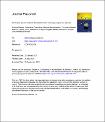Connected speech markers of amyloid burden in primary progressive aphasia
| dc.contributor.author | Slegers, Antoine | |
| dc.contributor.author | Chafouleas, Geneviève | |
| dc.contributor.author | Montembeault, Maxime | |
| dc.contributor.author | Bedetti, Christophe | |
| dc.contributor.author | Welch, Ariane E. | |
| dc.contributor.author | Rabinovici, Gil D. | |
| dc.contributor.author | Langlais, Philippe | |
| dc.contributor.author | Gorno-Tempini, Maria Luisa | |
| dc.contributor.author | Brambati, Simona Maria | |
| dc.date.accessioned | 2021-10-19T12:13:36Z | |
| dc.date.available | MONTHS_WITHHELD:12 | fr |
| dc.date.available | 2021-10-19T12:13:36Z | |
| dc.date.issued | 2021-10-07 | |
| dc.identifier.uri | http://hdl.handle.net/1866/25767 | |
| dc.publisher | Elsevier | fr |
| dc.rights | Ce document est mis à disposition selon les termes de la Licence Creative Commons Attribution - Pas d’utilisation commerciale - Pas de Modification 4.0 International. / This work is licensed under a Creative Commons Attribution - NonCommercial - NoDerivatives 4.0 International License. | |
| dc.rights.uri | https://creativecommons.org/licenses/by-nc-nd/4.0/deed.fr | |
| dc.subject | Primary progressive aphasia | fr |
| dc.subject | Biomarkers | fr |
| dc.subject | Connected speech | fr |
| dc.subject | Natural language processing | fr |
| dc.subject | Alzheimer’s disease | fr |
| dc.subject | Differential diagnosis | fr |
| dc.subject | Telemedicine | fr |
| dc.title | Connected speech markers of amyloid burden in primary progressive aphasia | fr |
| dc.type | Article | fr |
| dc.contributor.affiliation | Université de Montréal. Faculté des arts et des sciences. Département de psychologie | fr |
| dc.identifier.doi | 10.1016/j.cortex.2021.09.010 | |
| dcterms.abstract | INTRODUCTION Positron emission tomography (PET) amyloid imaging has become an important part of the diagnostic workup for patients with primary progressive aphasia (PPA) and uncertain underlying pathology. Here, we employ a semi-automated analysis of connected speech (CS) with a twofold objective. First, to determine if quantitative CS features can help select primary progressive aphasia (PPA) patients with a higher probability of a positive PET amyloid imaging result. Second, to examine the relevant group differences from a clinical perspective. METHODS 117 CS samples from a well-characterised cohort of PPA patients who underwent PET amyloid imaging were collected. Expert consensus established PET amyloid status for each patient, and 40% of the sample was amyloid positive. RESULTS Leave-one-out cross-validation yields 77% classification accuracy (sensitivity: 74%, specificity: 79%). DISCUSSION Our results confirm the potential of CS analysis as a screening tool. Discriminant CS features from lexical, syntactic, pragmatic, and semantic domains are discussed. | fr |
| dcterms.isPartOf | urn:ISSN:0010-9452 | fr |
| dcterms.language | eng | fr |
| UdeM.ReferenceFournieParDeposant | https://doi.org/10.1016/j.cortex.2021.09.010 | fr |
| UdeM.VersionRioxx | Version acceptée / Accepted Manuscript | fr |
| oaire.citationTitle | Cortex | fr |
Files in this item
This item appears in the following Collection(s)
Usage rights : Ce document est mis à disposition selon les termes de la Licence Creative Commons
Attribution - Pas d’utilisation commerciale - Pas de Modification 4.0 International. / This work is licensed under a
Creative Commons Attribution - NonCommercial - NoDerivatives 4.0 International License.



